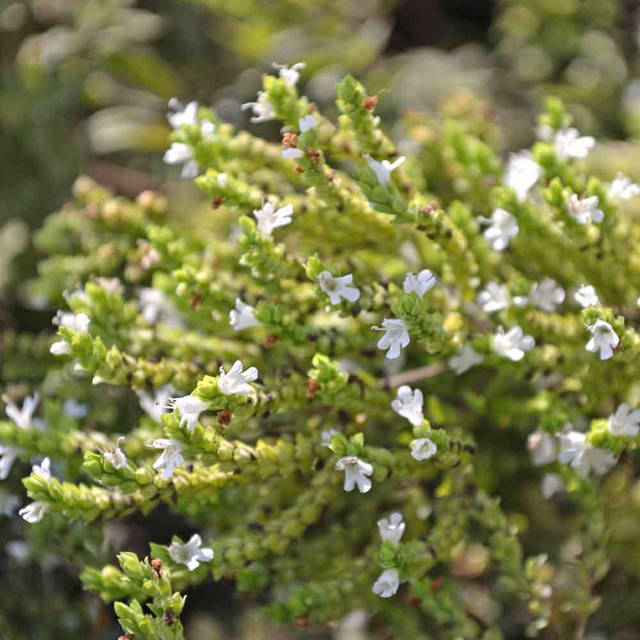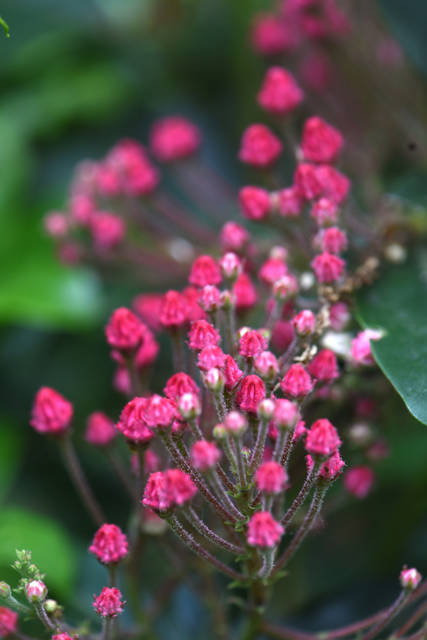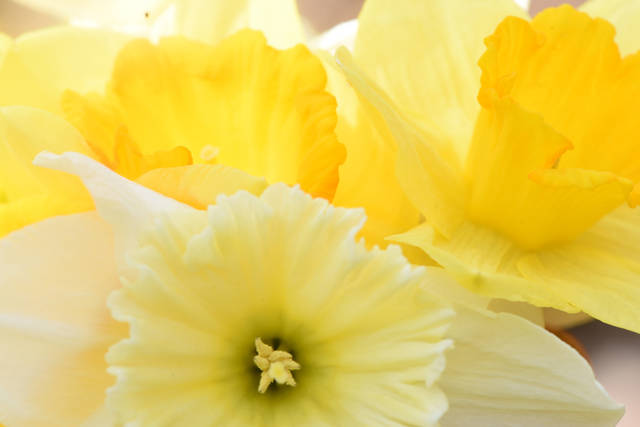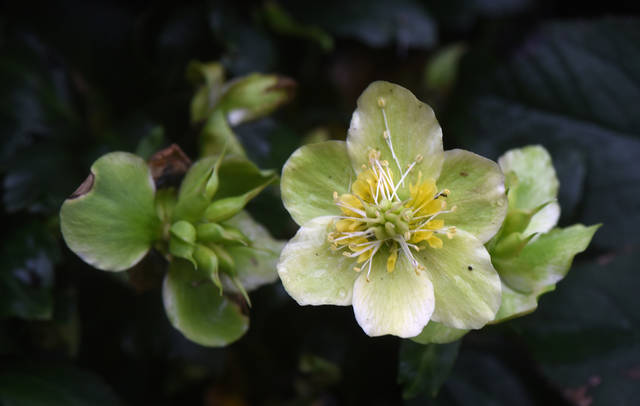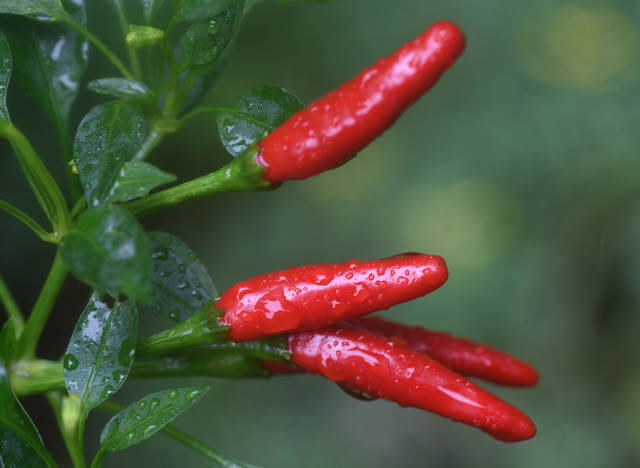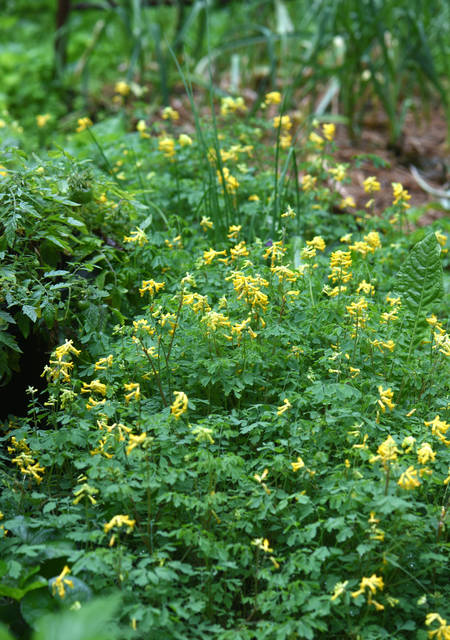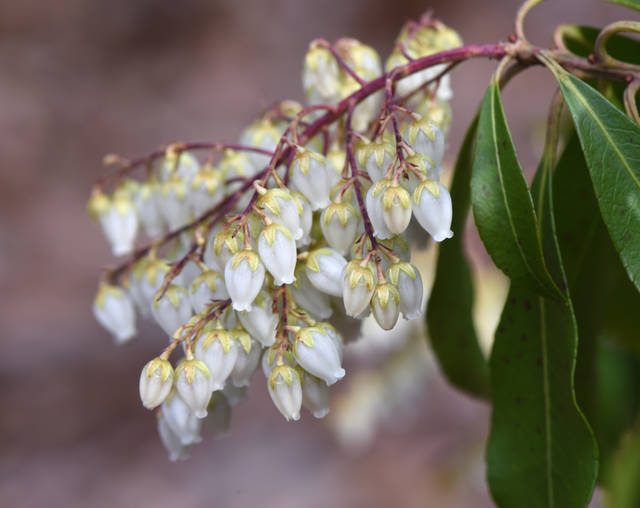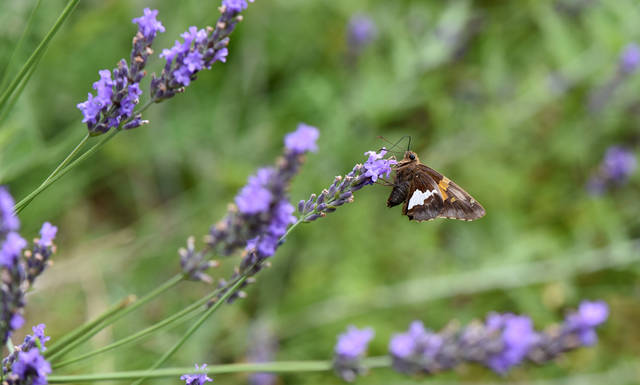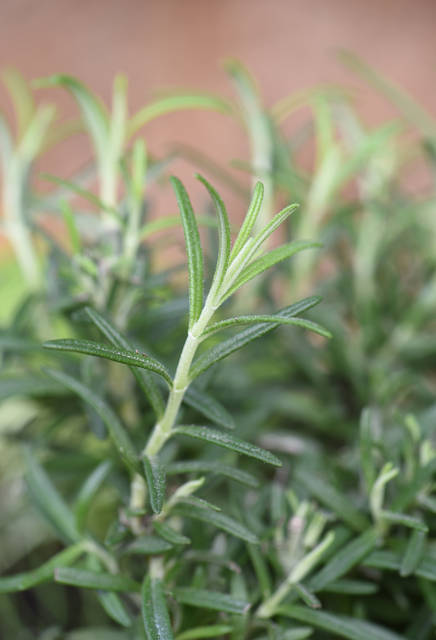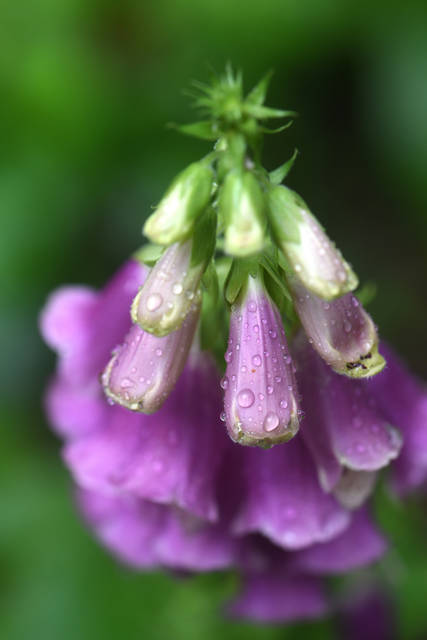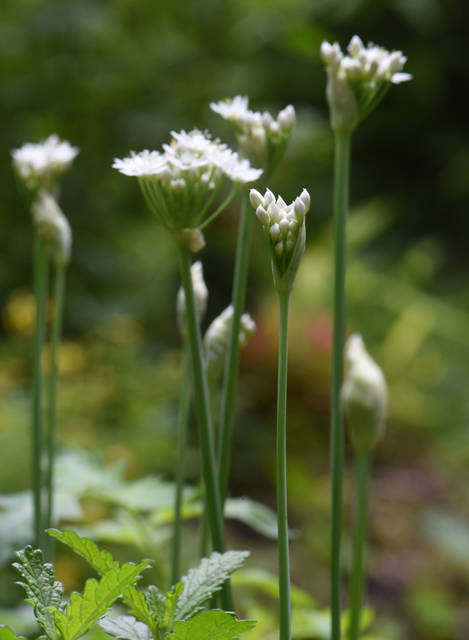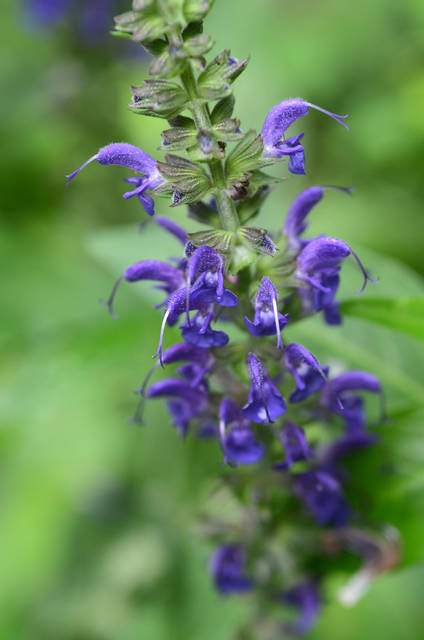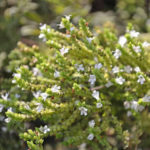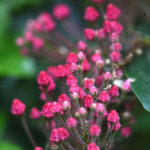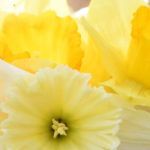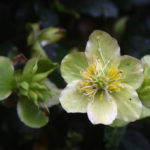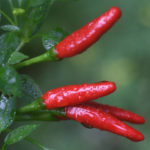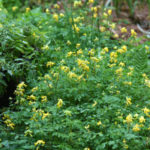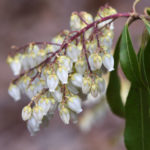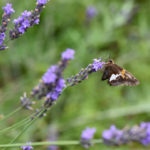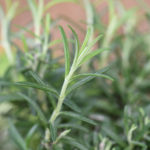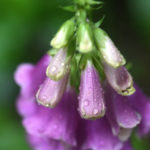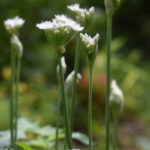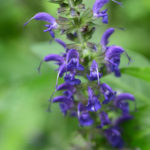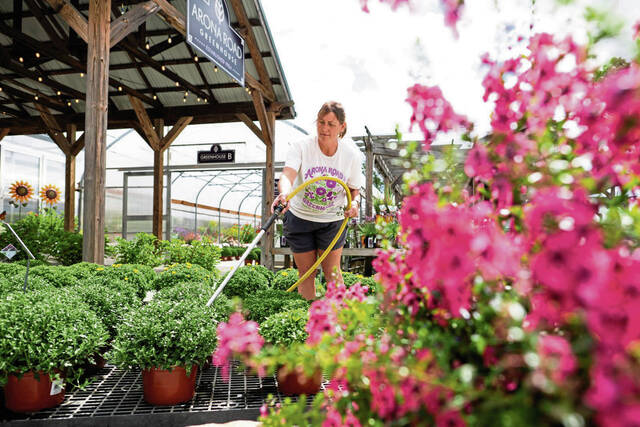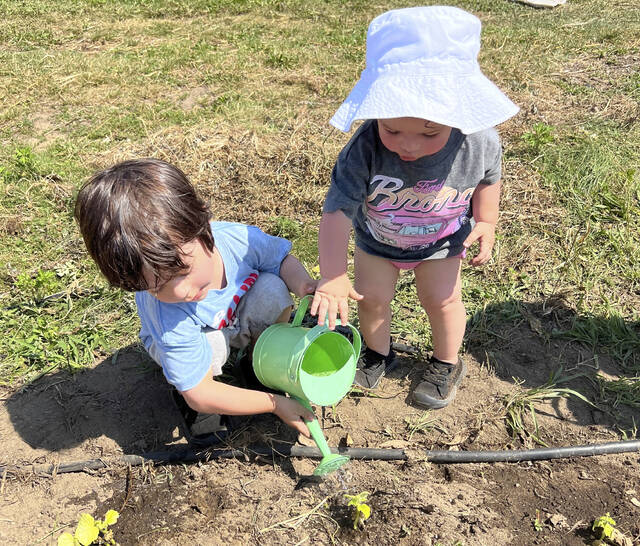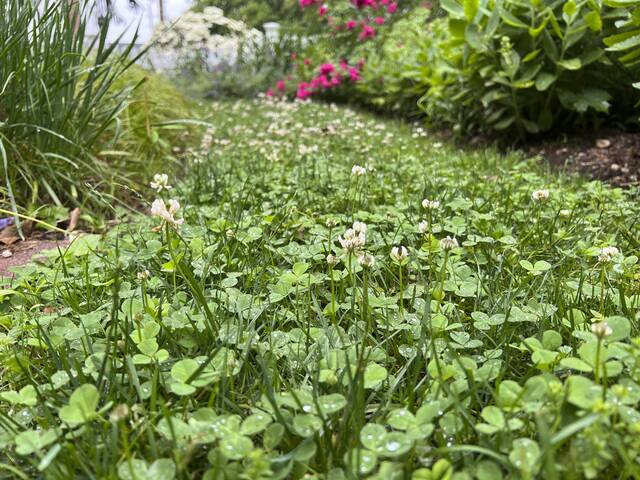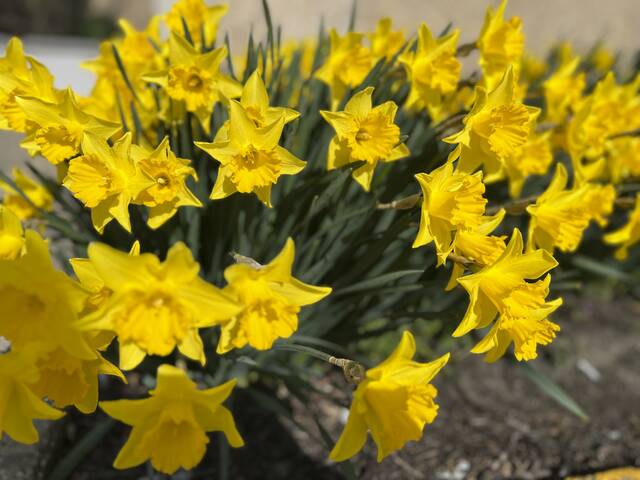As I stepped out the kitchen door to walk the dog, a young deer munching on hydrangeas confronted us. This buck was in rut and looked at us as if we were competitors in the race to mate.
As my dog barked wildly, the deer backed off a little but then stood its ground again. Eventually it sauntered off, but grudgingly.
Deer have become one of the biggest problems for gardeners, mostly due to the way they forage on our treasured plants.
The first line of defense is always some kind of physical barrier. In my garden, the vegetable plot is a fenced haven, which has seen additions of lilies, hydrangeas and many other plants the deer love. There are shrubs bordering the garden surrounded by deer netting throughout the landscape, too.
The next step is to use a repellent. My favorite is Bobbex, but there are countless formulas including sprays, granular formulations and other products. If they are not used regularly, the deer will feast on your plants.
The list that follows is mostly plants grown in my own garden or by friends. They are deer-resistant, not deer-proof.
In fact, just about everything on the list could get tasted by deer, but they are not favorites.
What is deer-resistant for one person might not be for another. Every time a list like this is put together, gardeners will contact me, explaining how the deer love one of the so-called resistant varieties.
Every herd eats differently; it’s one of the maddening things about dealing with deer.
SHRUBS
Kerria
I discovered kerria a few years ago when it was on sale at a local nursery. Deer have never touched this carefree shrub in my garden. It blooms with orange/yellow flowers and is easy to propagate by layering. I keep moving the babies around the shade garden, but this plant can also take sun.
Boxwood
Boxwoods are one of the more popular shrubs and are commonly used in the landscape. There is a disease called boxwood blight, which is something to think about when planting the shrub. There are disease-resistant varieties being introduced this season.
The plant takes well to pruning and will grow for decades when it’s happy.
Juniper
Junipers are one of the toughest plants on the planet. They can grow prostrate or tall like a tree. If you’re looking for an indestructible evergreen, give junipers a look.
Pieris japonica
This is another easy-to-grow evergreen that has never felt the wrath of deer in my garden. The old varieties will reach 20 feet in height, but some of the new cultivars are smaller, with brighter red new growth, and there are even variegated varieties.
They are grown for their small white, sweetly scented flowers that appear in early spring. This is one of my favorite plants.
Bush cinquefoil (Potentilla fruticosa)
I’ll never forget the first time I saw a buttercup bush blooming in mid-summer with bright yellow blooms. I was blown away by the number of flowers on the plant and how the yellow blooms stood out in the garden.
It needs full sun, also comes in white and red and is easy to grow. It’s a great foundation plant, producing flowers when many shrubs have already put on their show.
Spirea
There are many different types of spirea, and all are deer-resistant. It’s amazing what breeders have done with the plant. Chartreuse foliage with red flowers, big plants, compact varieties … the sky is the limit.
Lilac
Some people refer to lilacs as one-trick ponies, but the fragrance of a lilac is an incredible trick. A vase full of flowers is one of the wonderful traditions of spring. Explore the world of lilacs, which offer more than the standard purple flowers. There are lots of other variations.
Winterberry
If you want winter interest, there’s nothing better than the bright red berries of a winterberry. They are spectacular in a mass planting and simple to grow.
Inkberry
This easy-to-grow evergreen shrub has small, nearly black berries, hence the name. Often used as a substitute for boxwoods, this tough plant will be happy in the shade or with part sun.
Beautyberry
The bright purple berries on this plant appear in the fall and are actually edible. It will grow in full sun to part shade and is a showstopper when covered in berries. In the sun, it can be a tall columnar plant; in the shade, a weeper.
Elderberry
Cultivated varieties like ‘Black Lace’ and ‘Black Beauty’ make a bold statement in the garden. Elderberries are tough shrubs that like sun but will also grow in part shade.
Forsythia
The ultimate one-trick, indestructible pony is beloved for its cheery spring flowers. Don’t prune them into meatballs; let them grow in their natural form.
Quince
Blooming just about the same time as forsythia, quince has fallen out of favor with gardeners and it’s hard to explain why. Beautiful red spring flowers and an adaptable habit make it a winner in the landscape.
Holly
As soon as I say holly is deer-resistant, someone replies that the four-legged marauders nibbled on their shrubs. If a deer is hungry enough, it will eat just about anything. I’ve been lucky with my plants, as they have never touched my hollies.
Bulbs
These bulbs are planted in the fall. A bulb auger makes the job easy and fun. They can be planted until the ground freezes solid. Bulbs are planted three times as deep as the bulb itself. Look for bargains locally and online starting in November.
Snowdrops
They are one of the first bulbs to bloom. These little white flowers can appear as early as mid-January and will form a colony after a few seasons. ‘Flore Pleno’ is an amazing double that every gardener should plant.
Puschkinia
I discovered this lovely little flower a few seasons ago and have become obsessed with its creamy white flowers with blue stripes. They will also expand their range over the years, and the deer have never looked at them in my garden.
Glory of snow (Chionodoxa)
Plant ‘Violet Queen’ with puschkenia, and you will be happy in the spring as they bloom in consort and make a wonderful marriage of colors. Glory of snow blooms right after crocus and will multiply over time.
Alliums
Alliums are from the onion family and, even though they are as close to being deer-proof as any plant, I had some foliage nibbled on one spring — but one bite and that was it. They are probably best known for tall, purple globular flowers, but that’s just scratching the surface of this diverse species.
How about a blue allium like A. azureum? There are red, yellow, purple, white and other colors available in a range of sizes.
Blue Squill
When my honeybee mentor asked why he was seeing the bees bring back blue pollen, I went out to see if the blue squill were in bloom. They were flowering strong, so that was the source. Everyone wants blue in the garden, ‘nuff said.
Vegetables
Garlic
“It would be a sad world without garlic,” my friend Johno Prascak says. I deliver bulbs to the Pittsburgh artist annually, as we are both obsessed with the plant. Easy to grow from a fall planting, the bulbs give home gardeners five different harvests.
Artichokes
It’s not the easiest plant in the world to grow in zone 5, but it can be done. Plants need protection over the winter and will produce the next season.
Rhubarb
Three words, strawberry rhubarb pie. That’s all you need to know.
Chives
Chives are one of the first things to emerge in the spring. Even the pretty purple flowers are edible. Luckily, the deer can’t stand the flavor or fragrance of the plant.
Dill
Once you have dill, you’ll always have dill. The wonderful plant throws seeds everywhere. It’s one of the best plants for attracting beneficial insects to the garden. It’s fun to snack on in the garden, too.
Mint
Mint is a bully and should never be allowed to escape a pot. In fact, the drainage hole needs to be plugged so the roots won’t find their way out. I put an above-ground pool over a bed of mint, and it still returns annually.
Onions
I can’t grow decent onions, because there’s just not enough sun in my garden to get them to head up to anything bigger than about 3 inches. Bunching onions are a different story, though, and something to consider if you’re in my situation.
Potatoes
Deer might nibble on the foliage, but they aren’t interested in what’s below. Potatoes out of the garden are a real treat in the kitchen. Look for interesting colors and varieties for spring planting.
A blanket of straw at the end of the season will keep them happy for a January thaw harvest.
Hot peppers
I’d pay good money to see deer bite into a ‘Super Chili’ pepper. Probably will never happen though. One whiff of the plant and they start searching for more hostas.
Rosemary
The scent of rosemary is one of my favorite aromas, especially when roasting something with the herb. The plant is easy to grow outdoors, but can be a struggle for winter windowsill growing.
If neglected, it will die, and if given too much love in the form of water, you’ll have the same result. Keep the soil evenly moist and harvest the leggy growth as needed.
Sage
Here’s another aromatic herb that can be brought inside to grow all winter. It’s fun to grow some of the variegated varieties.
Thyme
There are lots of different types of thyme. It’s a great winter windowsill herb, too. Creeping thyme is a great plant to put between flagstones. Every time it’s walked on, the tough herb releases its wonderful aroma.
Perennials
Hibiscus
Perennial hibiscus plants bloom later in the season, producing large flowers. It’s one of the most spectacular plants at the end of summer to flower. Hibiscus is easy to grow, with a multitude of different cultivars to explore.
Salvia
‘May Night’ salvia is probably the standard for all other perennial salvias, but there are many to choose from. There are also plenty of annual salvias to consider. The deer have never bothered either type in my garden.
Iris
German bearded iris and Siberian iris are both deer-resistant and beautiful late-spring bloomers. I grow a purple bearded iris that smells like grape Kool-Aid. There are more irises to choose from than you could possibly imagine.
Grasses
Perennial or annual grasses won’t be bothered by deer when planted in the landscape. There are tall, wide, short, green, pink and red varieties, along with many other combinations.
Phlox
Every year the deer enter the perimeter of the garden and chomp a few phlox plants, which acts as a great pruning technique to get more blooms. In my garden they leave these plants alone as they mature and the stalks get tougher.
Foxglove
Technically a biennial, foxglove forms foliage the first year, flowers the second and then dies. The plant will scatter seeds everywhere, though, and they will appear anywhere they are happy in the garden for years to come.
Digiplexis is an annual that crosses foxglove (digitalis) and Isoplexis canariensis. I saw it growing unprotected at the Pittsburgh Botanic Garden where the deer pressure is relentless, and it was unscathed.
Delphinium
This plant is the queen of the spring garden and requires good soil, plenty of water and prayers if living in a zone 6 or colder garden. I’ve never had much success with keeping the plants alive for more than a few seasons, but the tall spires of blooms are not to be missed. They are worth a try for their beautiful flowers.
Poppies
Once these perennials are in place, they will continue unabashed for decades to come. Brilliant orange or red flowers brighten any garden.
Bleeding heart
There are old-fashioned bleeding hearts (Lamprocapnos spectabilis, formally Dicentra spectabilis) that go dormant in the summer. There are also fringed leaf varieties (Dicentra eximia) that will continue all season. Both enjoy a shady moist location and have pretty red or pink flowers.
They’re pretty easy to grow as long as they get the moisture they need.
Lambs ears
It’s the tiny hairs on the leaves that deer can’t stand when their noses touch the foliage. This sun lover will cover ground over the years and has soft, lovely gray-greenish foliage. A fun plant to grow for kids, too.
Hellebore
There are two different types of hellebores: H. orientalis or Lenten Rose blooms early in the spring and H. niger or Winter Rose starts blooming in November. Both have evergreen foliage and can be bothered by the deer, but rarely heavily damaged. They have never bothered either plant in my garden, but I’ve heard stories.
The Lenten Rose has a wide variety of different blooms, whereas the Winter Rose has white and rose colored buds which open to white flowers, often with a yellow or purple center.
Corydalis lutea
It’s the No. 1 perennial in my garden, as it blooms from April to November and is completely carefree. It will grow in a sunny spot or dry shade. In the shade it’s 18 inches tall, in the sun the plant grows 3 feet tall.
It’s covered with yellow flowers held over gray-greenish foliage and forms a colony in a few years by throwing seeds. It’s the plant that makes my garden look like someone is actually tending the beds. I couldn’t imagine a garden without this plant.


